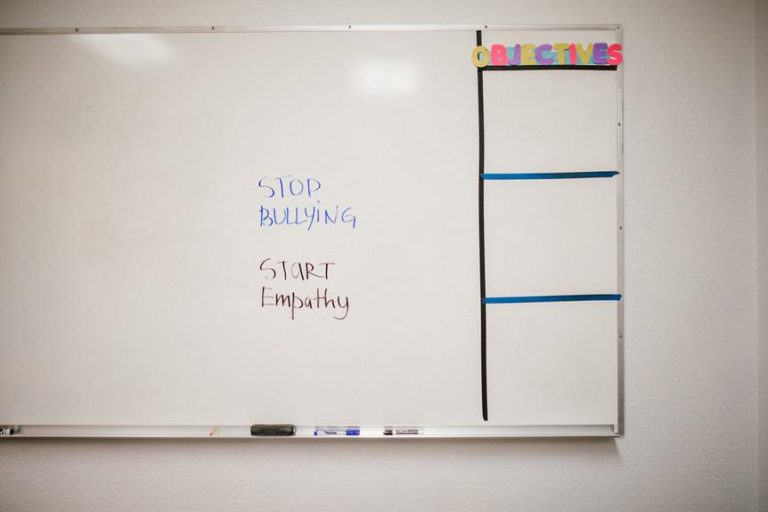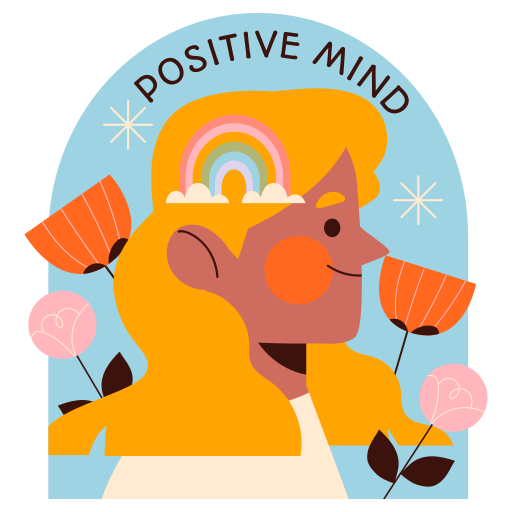Through introspection and observation, one cannot overlook the intricate tapestry of characteristics that often mark a broken person. From the subtle nuances of low self-esteem to the profound impact of trust issues and emotional turmoil, each trait unravels a layer of vulnerability and resilience. However, it is not merely in the identification of these traits that the essence of healing lies but in the journey towards understanding, acceptance, and transformation. As we navigate through the labyrinth of brokenness, a beacon of hope emerges, hinting at the possibility of restoration and rebuilding amidst the fragments of a shattered self.
Low Self-Esteem
Low self-esteem is a fundamental aspect of brokenness that often manifests as a pervasive sense of inadequacy and self-doubt in individuals navigating their healing journey. Building self-worth and confidence becomes a crucial step towards overcoming negative self-talk patterns that reinforce feelings of unworthiness. Encouraging individuals to engage in self-care practices, positive affirmations, and setting achievable goals can aid in rebuilding their self-esteem. Acknowledging one's strengths and accomplishments, no matter how small, is vital in shifting the focus from self-criticism to self-appreciation. By fostering a supportive environment that promotes self-compassion and self-acceptance, individuals can gradually challenge their negative beliefs and cultivate a healthier self-image, laying a strong foundation for their healing process.
Sensitivity to Rejection
Navigating the complexities of brokenness often involves grappling with a heightened sensitivity to rejection, which can profoundly impact an individual's emotional well-being and interpersonal relationships. Rejection sensitivity is a common trait among those who have experienced emotional wounds, trauma, or feelings of worthlessness. This heightened sensitivity can lead to a fear of rejection, abandonment, and difficulties in forming healthy boundaries. On the healing journey, it is essential to address these underlying issues through self-compassion, therapy, and support systems. Acknowledging and working through rejection sensitivity is a crucial step towards rebuilding self-worth and fostering healthier relationships. By recognizing and addressing these vulnerabilities, individuals can begin to heal and strengthen their emotional resilience.
Difficulty Setting Boundaries
Addressing challenges in setting boundaries is a pivotal aspect of the healing journey for individuals struggling with brokenness. Difficulty establishing healthy boundaries can stem from past experiences of neglect, abuse, or a lack of self-worth. This struggle can impede personal growth and hinder relationships. To overcome this hurdle and move towards healing, individuals must focus on developing and enforcing healthy boundaries. Here are four essential steps to help in navigating this process:
- Self-Reflection: Understand personal needs and limits to define boundaries effectively.
- Communication: Learn to assert boundaries clearly and respectfully with others.
- Consistency: Practice enforcing boundaries consistently to establish trust and respect.
- Seeking Support: Engage in therapy or counseling to work through underlying issues and enhance boundary-setting skills.
Emotional Turmoil
Challenges in establishing and maintaining healthy boundaries can often lead individuals struggling with brokenness to experience profound emotional turmoil, impacting their overall well-being and relationships. Emotional healing journey and self-compassion practices play a crucial role in navigating this turmoil. Coping mechanisms such as mindfulness, journaling, or seeking professional support can aid in processing intense emotions. Developing healthy relationships built on trust and communication can provide a supportive environment for healing. It is essential to acknowledge and address these emotional struggles as part of the healing process. By embracing vulnerability and engaging in self-compassion practices, individuals can begin to work through their emotional turmoil, paving the way for personal growth and improved well-being.
Isolation and Withdrawal

In the journey of healing brokenness, individuals often find themselves retreating into solitude and pulling away from social interactions, a pattern commonly known as isolation and withdrawal. This phase can be challenging, but it's essential to acknowledge and address. Here are four key points to consider:
- Importance of Social Connections: Maintaining some form of social contact, even if minimal, can provide a sense of belonging and support during this isolating period.
- Understanding Coping Mechanisms: Recognizing how one copes with difficult emotions, such as through isolation, can be the first step towards healthier coping strategies.
- Seeking Professional Help: Consulting a therapist or counselor can offer guidance on navigating feelings of withdrawal and isolation effectively.
- Exploring Support Groups: Joining support groups can provide a safe space to share experiences and connect with others facing similar struggles.
Avoidance of Intimacy
Why do individuals experiencing brokenness often exhibit patterns of avoidance when it comes to intimacy? This fear of closeness and intimacy can stem from past emotional wounds, leading to avoidant attachment styles in relationships. Those who are broken may struggle with establishing and maintaining intimate connections due to a deep-seated fear of rejection, abandonment, or lack of trust. Avoiding intimacy can be a coping mechanism to protect oneself from further emotional pain or to navigate difficulties in processing past hurts. It is essential for individuals experiencing brokenness to address these avoidance patterns in relationships through therapy, self-reflection, and building trust to embark on a journey of healing and relearning healthy attachment behaviors.
Self-Sabotaging Behaviors

Individuals experiencing brokenness often find themselves engaging in self-sabotaging behaviors as a detrimental coping mechanism to navigate their emotional struggles and past traumas. Self-awareness and a commitment to growth are crucial in breaking free from these destructive patterns. Here are four key points to consider in understanding self-sabotage:
- Recognize Triggers: Identifying what triggers self-sabotaging behaviors can help in developing healthier coping mechanisms.
- Cultivate Self-Compassion: Being kind to oneself during setbacks is essential for recovery and healing.
- Seek Professional Help: Therapy and counseling can provide valuable tools to address underlying issues fueling self-sabotage.
- Practice Mindfulness: Staying present and aware of thoughts and actions can aid in breaking the cycle of self-destructive behaviors.
Difficulty Expressing Emotions
Emotional expression can often present as a challenging endeavor for individuals grappling with brokenness and unresolved emotional wounds. Communication challenges may arise due to fear of vulnerability or past rejections, hindering the healing process. These individuals may find it difficult to articulate their feelings, leading to a sense of isolation and emotional turmoil. However, through the journey of self-discovery, exploring and understanding one's emotional expression can be a vital step towards healing. Encouraging these individuals to seek support in therapy or counseling can aid in unlocking their ability to express emotions effectively. Embracing emotional healing and practicing self-compassion can gradually help in breaking down the barriers to authentic emotional expression and fostering healthier relationships.
Chronic Sadness, Anger

Experiencing chronic sadness and anger is a common manifestation of unresolved emotional pain and distress within individuals navigating through brokenness. When dealing with these emotions, it is crucial to address them effectively to aid in the healing process. Here are some strategies to manage anger and cope with sadness:
- Identify Triggers: Recognize what prompts feelings of anger or sadness to better understand and manage these emotions.
- Healthy Outlets: Engage in activities like exercise, journaling, or talking to a trusted individual to release pent-up emotions.
- Therapeutic Techniques: Consider therapy or counseling to learn effective coping mechanisms and emotional regulation skills.
- Self-Compassion: Be gentle with yourself during periods of sadness or anger, practicing self-care and self-compassion to nurture emotional healing.
Trust and Vulnerability Issues
Navigating through chronic sadness and anger often intertwines with the struggle of trust and vulnerability issues, creating additional barriers to emotional healing and growth. Healing through vulnerability and trust is key to overcoming emotional barriers. Individuals who have experienced brokenness may find it challenging to open up, fearing further pain and rejection. This fear can lead to walls being built, hindering the potential for deep emotional connections and healing. Recognizing and addressing these trust and vulnerability issues is crucial in the journey towards healing. By gradually allowing oneself to be vulnerable and learning to trust again, individuals can begin to break down these emotional barriers and cultivate healthier relationships with themselves and others. It is a gradual process, but one that is essential for true emotional restoration.
Protection From Emotional Pain

In the journey of healing from brokenness, individuals often erect emotional barriers as a means of safeguarding themselves from further pain and vulnerability. These barriers can manifest in various ways and impact different aspects of one's life. When protecting oneself from emotional pain, it is crucial to consider the following:
- Emotional healing strategies: Engage in activities like therapy, journaling, or mindfulness to address and process past hurts.
- Coping mechanisms: Develop healthy coping mechanisms to deal with emotional distress and triggers effectively.
- Impact on relationships: Understand how these barriers can affect relationships by creating distance and difficulty in forming connections.
- Impact on self-esteem: Recognize the impact of emotional walls on self-worth and confidence, and work towards rebuilding self-esteem through self-care and self-compassion practices.
Is Healing Possible for someone Considered Cold-Hearted?
Yes, healing is possible for a coldhearted person. With the right love approach, they can open their hearts and find healing. It may take time and patience, but with the right support and understanding, a coldhearted person can learn to love and be loved in return.
Fear of Rejection, Abandonment
The fear of rejection and abandonment often stems from past emotional wounds and experiences, shaping an individual's perceptions and behaviors in relationships. Overcoming abandonment fears involves building trust and emotional resilience. Healing from these deep-seated fears requires introspection, therapy, and support to address underlying insecurities. By recognizing these fears and their origins, individuals can work towards healing and developing healthier relationship patterns. Building trust in oneself and others is crucial in overcoming the fear of rejection and abandonment. Through open communication, setting boundaries, and engaging in self-care practices, individuals can gradually heal from past emotional traumas. It is a journey that requires patience, self-compassion, and a willingness to confront and overcome these fears for personal growth and emotional well-being.
Lack of Trust

Understanding the impact of a lack of trust is crucial in navigating the complexities of brokenness and embarking on a journey towards healing and restoration. Trust issues can deeply affect relationships and hinder personal growth. To address this challenge effectively, consider the following:
- Rebuilding trust: Engage in open communication and honesty to gradually rebuild trust in relationships.
- Overcoming trust issues: Seek therapy or counseling to work through past experiences that have led to trust issues.
- Setting boundaries: Establish clear boundaries to protect yourself while gradually learning to trust others.
- Practicing vulnerability: Take small steps to be vulnerable with trusted individuals to gradually overcome trust barriers.
Frequently Asked Questions
How Can Someone With Low Self-Esteem Start Building Their Self-Worth and Confidence?
Embarking on a journey to self-worth and confidence requires acknowledging low self-esteem, embracing self-improvement, and practicing self-care. Through self-acceptance and setting small achievable goals, building self-worth becomes a transformative process of self-discovery and empowerment.
What Are Some Effective Ways to Cope With Rejection and Overcome Sensitivity to It?
Coping mechanisms, therapy, mindfulness, and self-care play vital roles in overcoming rejection sensitivity. Developing resilience through therapy, practicing self-compassion, and engaging in mindfulness techniques can help process emotions effectively, fostering healthier responses to rejection.
How Can Individuals Struggling With Setting Boundaries Learn to Assert Themselves and Prioritize Their Needs?
Individuals struggling with setting boundaries can learn to assert themselves and prioritize needs through assertiveness training, improving communication skills, and practicing self-care techniques. Understanding personal limits and communicating them effectively fosters healthier relationships.
What Are Some Healthy Strategies to Navigate Through Emotional Turmoil and Manage Overwhelming Feelings?
Navigating emotional turmoil involves mindfulness techniques for self-awareness and emotional regulation, along with self-care practices like exercise and hobbies. Building a strong support system is crucial for managing overwhelming feelings, fostering resilience, and healing.
How Can Someone Who Tends to Isolate Themselves and Withdraw From Others Work Towards Forming Meaningful Connections and Relationships?
To develop meaningful connections and relationships, individuals who tend to isolate themselves can focus on improving social skills through gradual exposure, joining groups of shared interests, seeking therapy to address underlying issues, and practicing vulnerability and empathy in interactions.

















